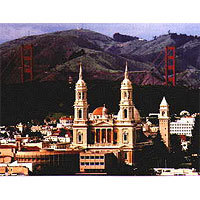Introduction
A few decades ago, San Francisco was known as one of the strongholds of the Peace and Love Generation. Through the years, the city has grown and evolved into much more. Today, it is a diverse mixture of technology, nature and culture. It has become one of the most technologically advanced cities in the world, yet it retains its closeness to nature and its tolerance of new people and new ideas.
This diversity and attitude of community and cultural acceptance is reflected in the University of San Francisco, a school that identifies itself closely with the city it calls home. The university’s mission is “to provide a rigorous, world-class education to a new generation of leaders, who will work to create a more humane and just world.”
One way USF aims to achieve this goal is by partnering with community organizations that work to benefit the city. The School of Education’s Mission Possible program, which uses school-based family counseling to help at-risk kids improve their academic performances, is just one example of the university’s involvement in its community. Another is the College of Arts and Sciences’ Architecture and Community Design Program, which teaches urban development and community planning with an emphasis on social services and sustainability.
USF History
Despite its close relationship with its technologically advanced home city and its modern outlook on the world, the University of San Francisco is, in some ways, also an institution of traditions. Though it accepts students of all backgrounds and faiths, the university’s values remain those of its Jesuit Catholic roots.
The University of San Francisco is a private university founded in 1855 by Father Anthony Maraschi, S.J., an Italian immigrant who named the new Jesuit school, then located on Market Street, St. Ignatius Academy in honor of St. Ignatius of Loyola, the founder of the Society of Jesus. In 1909, the campus was relocated to its current site at Fulton and Parker avenues, and in 1930, it was renamed the University of San Francisco.
One of only 28 Jesuit Catholic colleges in the U.S., the school makes sure its religious values are evident in each of its majors, even introducing a service-learning semester for undergraduates. This program gets students involved in community service programs related to their fields of study, giving them a chance to apply their academic training while also helping their community and creating a better world.
In addition, the university ministry helps students immerse themselves in the principles of the Jesuit religion, and the Jesuit Foundation gives grants to faculty and staff for worthy school projects.
Campuses
USF includes four regional campuses in Cupertino, Sacramento, San Ramon and Santa Rosa, but its 55-acre main campus is located right in the heart of San Francisco, next to Golden Gate Park. The location is ideal not only for learning and culture, with easy access to such sites as the California Academy of Sciences or any of the city’s numerous museums, but it is also a perfect place to have some fun when students aren’t attending classes. Theatres abound, and lovers of ballet, opera, and other forms of music can catch a variety of shows at the Civic Centre. A plethora of relaxing cruises and invigorating walking tours await, and for the athletically inclined, San Francisco is an excellent place to go sailing or biking. Those who prefer to be spectators can kick back and watch the Forty-Niners play football or take in a San Francisco Giants baseball game.



